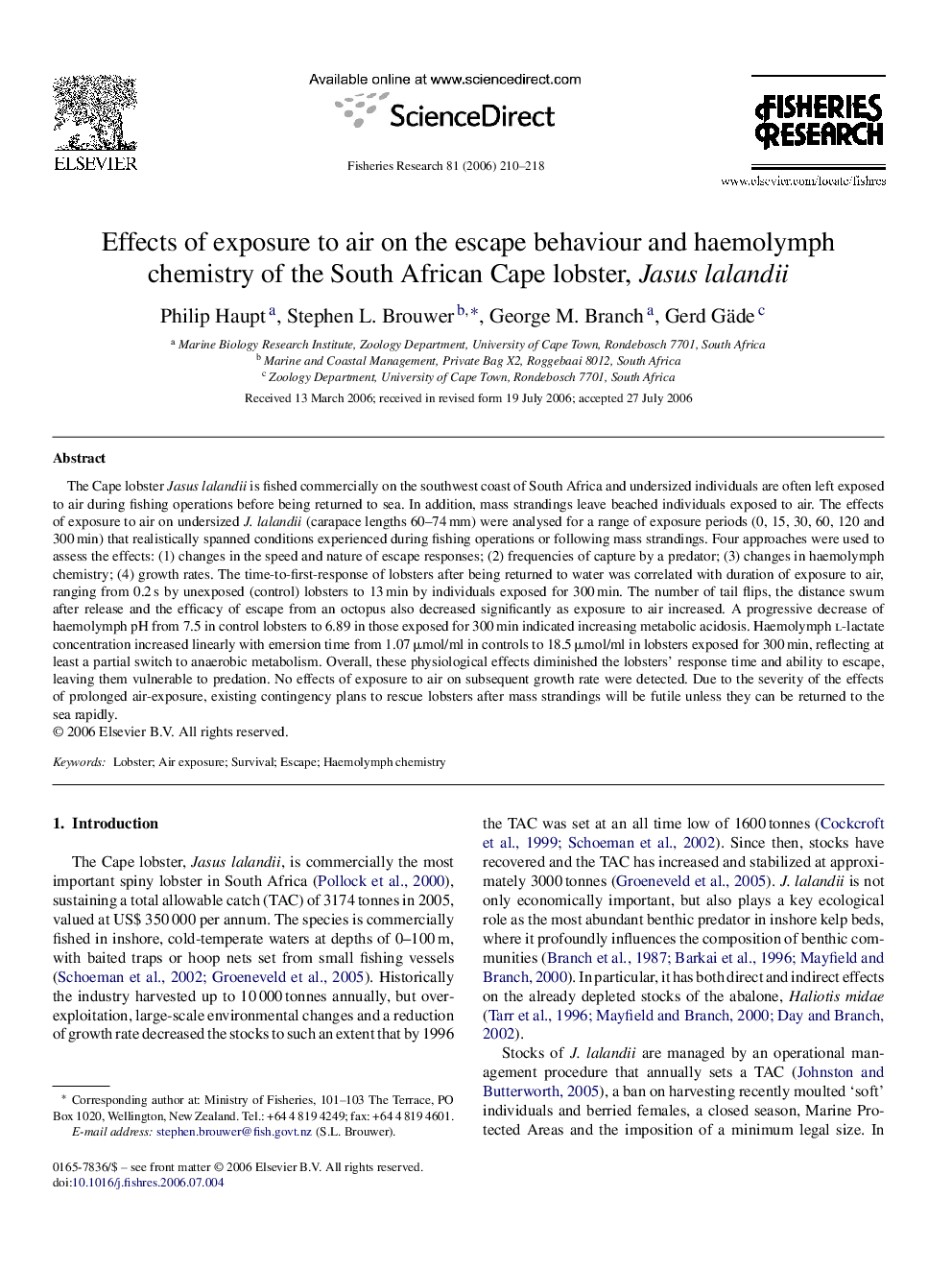| کد مقاله | کد نشریه | سال انتشار | مقاله انگلیسی | نسخه تمام متن |
|---|---|---|---|---|
| 4544895 | 1626868 | 2006 | 9 صفحه PDF | دانلود رایگان |

The Cape lobster Jasus lalandii is fished commercially on the southwest coast of South Africa and undersized individuals are often left exposed to air during fishing operations before being returned to sea. In addition, mass strandings leave beached individuals exposed to air. The effects of exposure to air on undersized J. lalandii (carapace lengths 60–74 mm) were analysed for a range of exposure periods (0, 15, 30, 60, 120 and 300 min) that realistically spanned conditions experienced during fishing operations or following mass strandings. Four approaches were used to assess the effects: (1) changes in the speed and nature of escape responses; (2) frequencies of capture by a predator; (3) changes in haemolymph chemistry; (4) growth rates. The time-to-first-response of lobsters after being returned to water was correlated with duration of exposure to air, ranging from 0.2 s by unexposed (control) lobsters to 13 min by individuals exposed for 300 min. The number of tail flips, the distance swum after release and the efficacy of escape from an octopus also decreased significantly as exposure to air increased. A progressive decrease of haemolymph pH from 7.5 in control lobsters to 6.89 in those exposed for 300 min indicated increasing metabolic acidosis. Haemolymph l-lactate concentration increased linearly with emersion time from 1.07 μmol/ml in controls to 18.5 μmol/ml in lobsters exposed for 300 min, reflecting at least a partial switch to anaerobic metabolism. Overall, these physiological effects diminished the lobsters’ response time and ability to escape, leaving them vulnerable to predation. No effects of exposure to air on subsequent growth rate were detected. Due to the severity of the effects of prolonged air-exposure, existing contingency plans to rescue lobsters after mass strandings will be futile unless they can be returned to the sea rapidly.
Journal: Fisheries Research - Volume 81, Issues 2–3, November 2006, Pages 210–218